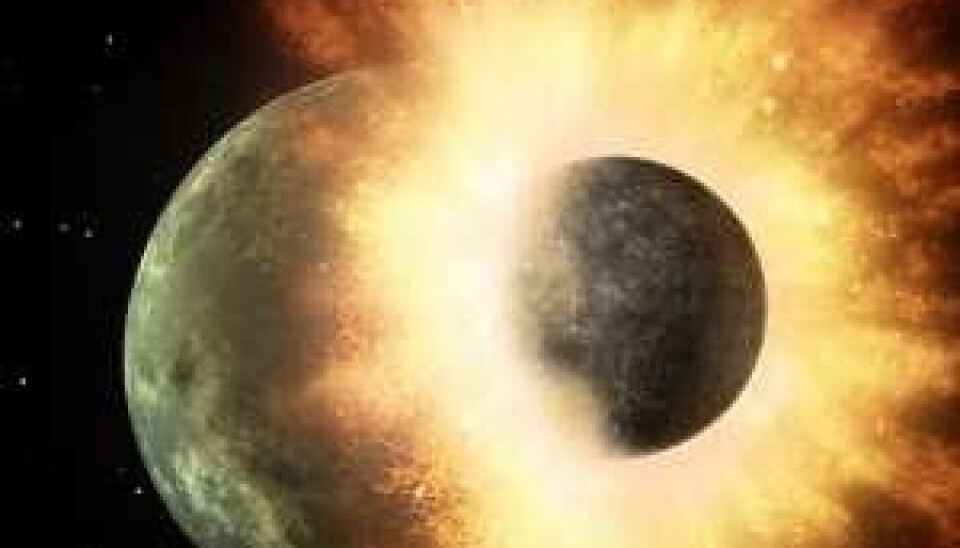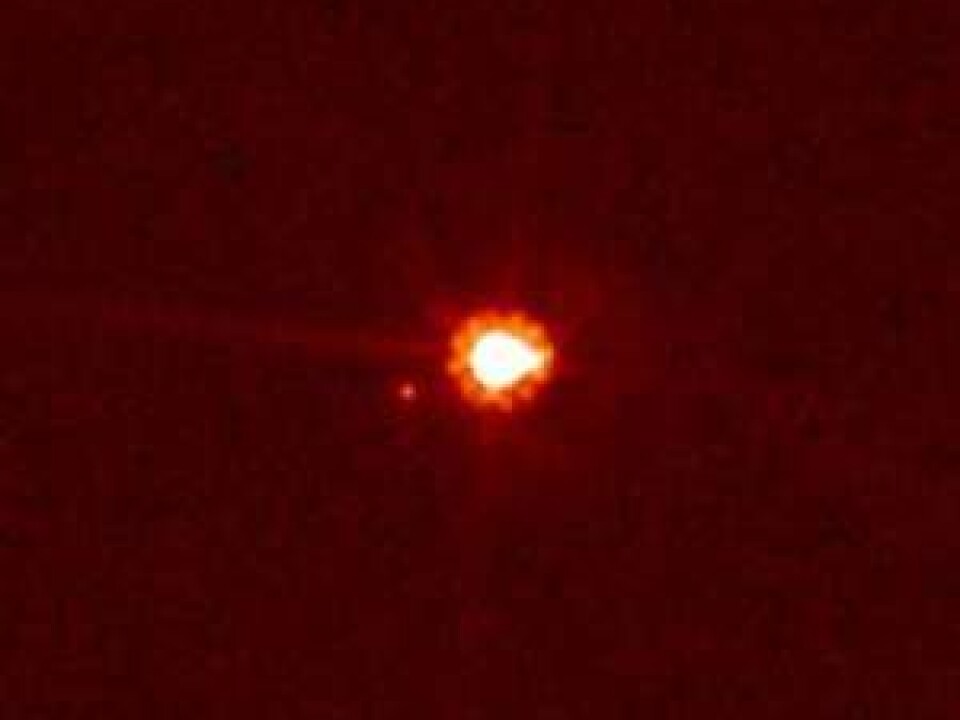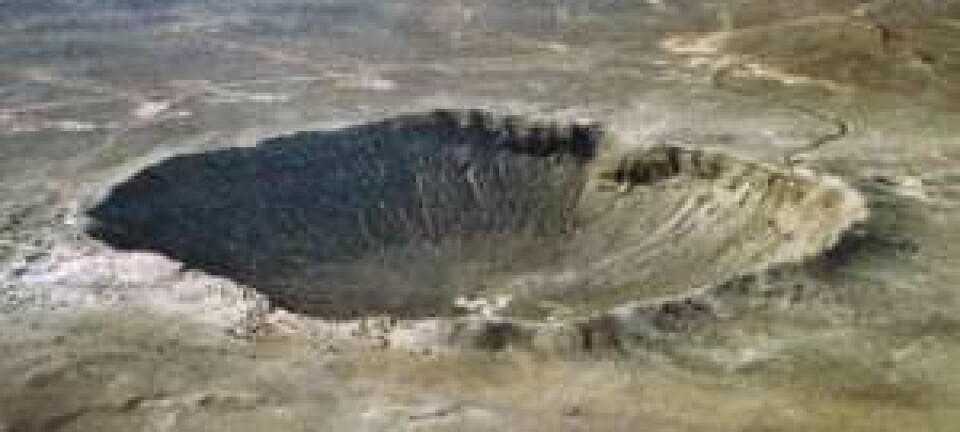
2012: Is Planet X on collision course with Earth?
The end of the world is approaching, according to internet-based groups who believe that Earth will be hit by Planet X, also known as Nibiru, in 2012. But astronomers say there is nothing to indicate that doomsday is just around the corner.
If you believe what shows up on the internet when you search for Planet X, Nibiru or 2012, then time is rapidly running out for Planet Earth. Apparently, we are set to collide with another planet during 2012 and the world as we know it will come to an end.
Yet despite the scores of websites and books claiming that Armageddon is fast approaching, astronomers remain unperturbed. Planet X, or Nibiru, is pure fiction, they contend.
The apocalyptic prophecy has clearly worried some people though. The website Ask an Astrobiologist, run by NASA research scientist David Morrison, has been inundated with questions on Nibiru and what will happen in 2012.
ScienceNordic has also received mails from anxious citizens wanting to know more about Nibiru. So to help put minds at rest, here is the full story of the doomsday planet.
The missing planet

The story of Planet X began in the 1800s with the French mathematician Urbain Le Verrier, who thought that the irregularities in the orbit of Uranus could be explained by a hitherto unseen planet. He was right too: in 1846, the planet Neptune was discovered exactly where Le Verrier had calculated it should be.
But that was not the whole answer, because the movements of the outer planets could still not be fully explained by Newton's laws. There had to be another planet affecting the orbits of Uranus and Neptune. The wealthy American Percival Lowell set about finding this unknown planet, which he dubbed Planet X.
In 1894, he financed a large telescope, the Lowell Observatory, to scour the heavens for the unknown planet. Lowell died in 1916, but the search continued and in 1930 the planet Pluto was found.
A mystery explained
But Pluto is very small. In 1978 astronomers confirmed that its mass – 0.002 that of the Earth – was insufficient to explain the irregularities in the orbit of Uranus, so speculation on yet another unseen planet arose. A number of hypotheses on the size and orbit of the unknown planet were put forward, but there was nothing to be seen in the sky.
The strange orbit of Uranus was finally explained in 1993. Astronomer Myles Standish used data from the Voyager 2 space probe to calculate Neptune's mass with greater precision than previously possible, and discovered that the planet was half a percent lighter than had hitherto been calculated. When this new figure for Neptune's mass was put into the equations, the orbital irregularities of Uranus were fully accounted for, and there was no longer any need for Planet X.
Nevertheless, the idea of the mystical planet has persisted. It seems to appeal to popular imagination in certain quarters, to the extent that it has even acquired a new name: Nibiru.
Visits from extra-terrestrials
In 1976, author Zecharia Sitchin wrote the first in a series of pseudoscientific books in which the Earth is visited by extra-terrestrials from the planet Nibiru. According to Sitchin, Earth was created when Nibiru collided with another planet called Tiamat.
Nibiru has a very elongated solar orbit lasting 3,600 years. According to Sitchin, extra-terrestrials from the advanced Nibiruan civilisation have made regular trips to our Earth, where among other things they have designed human beings. All of this, he said, is described in Sumerian mythology.
Nibiru is indeed mentioned as a celestial body in an ancient text. However, it occurs in the Babylonian (not Sumerian) poem Enuma Elish, and is probably a reference to Jupiter. But that didn't stop the American doomsday prophet Nancy Lieder from taking up the idea.
Zero probability
Lieder believes that Planet X and Nibiru are one and the same celestial body, an assertion she advocates on the website Zetatalk. In 1995, she began broadcasting the message that Planet X was approaching Earth and that catastrophe would result from a collision or fly-by.
She even put a date on it, but when 27 May 2003 came and went without apocalyptic incident, the timing of Armageddon was forwarded to coincide with the expiry of the Mayan Calendar in December 2012.
But if there really was a planet on its way towards Earth, astronomers would long since have seen it. And so would everyone else, because a large celestial body in the vicinity of the Earth would be an extremely bright object in the sky.
Conspiracy theory
With the world's astronomers collectively dismissing the Planet X idea, it is a wonder that such beliefs persist. But the doomsday scenario is a compelling and captivating thought for some, and in the absence of any hard evidence to support the idea, it is perhaps not surprising that Planet X fans explain the lack of evidence by claiming that the authorities are covering it up. In other words, there is a conspiracy.
On websites such as Your Own World USA, Surviving Nibiru, Church of Critical Thinking and Xfacts.com, you can read that Planet X/Nibiru has long been observed by astronomers, but that the truth is being kept from the rest of mankind.
Secret images
Reference is often made to data from the Infrared Astronomical Satellite (IRAS), which in 1983 searched the sky for objects that emit infrared radiation. The link between IRAS and Planet X/Nibiru is a short article which appeared in the Washington Post on 30 December 1983: 'Mystery Heavenly Body Discovered'. True, it was something that astronomers couldn't immediately identify, but it wasn't a new planet in our solar system. The mysterious object was probably a distant galaxy, of which IRAS found a large number.
An observatory at the South Pole called South Pole Telescope has apparently also observed Planet X/Nibiru, and on the internet we can even find 'secret' images of the planet. But David Morrison at NASA says this is absurd, because for one thing the South Pole Telescope is a radio telescope, which cannot take photos of the kind we see on the internet. For another, it makes no sense that such a planet could only be seen from the South Pole. The images which claim to show Planet X/Nibiru are typically photos taken looking into the Sun, where reflections in the camera lens (lens flares) give a false image, says Morrison.
Eris won't fit
It is no secret that from time to time, astronomers identify relatively large celestial bodies that are part of our solar system. Far away from the Sun and Earth, on the other side of distant Neptune, an army of objects are orbiting. Some are quite large, such as the dwarf planet Eris, which is actually larger than Pluto. But none of these objects are likely to get close enough to bump into the Earth.
Eris was discovered in 2005, the event being announced in a press release from NASA with the headline '10th Planet Discovered'. Understandably, that instantly whetted the appetites of the doomsday advocates. But however much effort Planet X fans make to get Eris to fit with their ideas, it is certain that Eris will never get closer to Earth than six billion kilometres. At least if you believe the astronomers. Doomsday, they insist, is not waiting around the corner.
Read the article in Danish at videnskab.dk
Translated by: Nigel Mander






